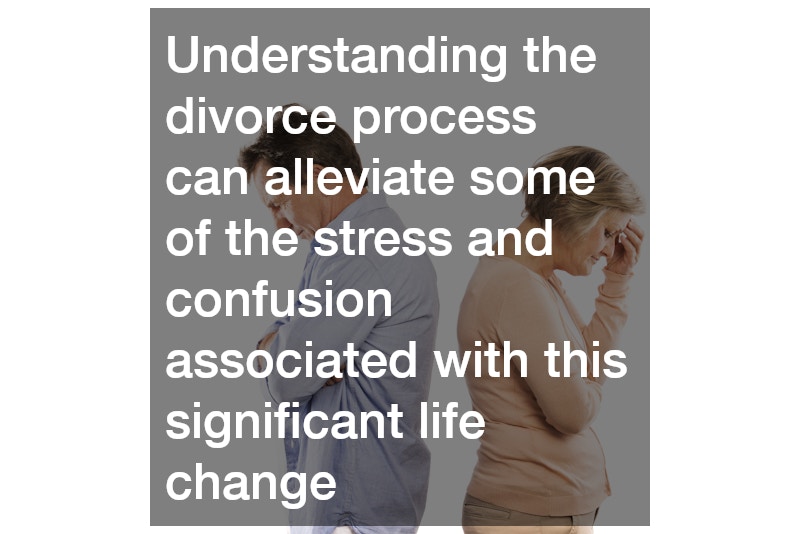Understanding Divorce
Divorce is the legal dissolution of a marriage, which means that the rights and responsibilities of both spouses are legally terminated. While each divorce is unique, the general process involves several key steps, including filing a petition, negotiating terms, and reaching a final agreement. It’s essential to understand the laws surrounding divorce in your jurisdiction, as they can vary significantly from one place to another.
Grounds for Divorce
Before initiating the divorce process, it’s important to identify the grounds for divorce, which are the reasons for seeking a divorce. These can generally fall into two categories:
-
Fault-Based Grounds: This includes reasons such as adultery, abandonment, or abuse. In fault-based divorces, one spouse must prove the other’s wrongdoing.
-
No-Fault Grounds: This type of divorce does not require either spouse to prove wrongdoing. Instead, one or both spouses can simply state that the marriage is irretrievably broken or that they have irreconcilable differences.
Most jurisdictions offer no-fault divorce options, making the process simpler and less contentious.
Filing for Divorce
The divorce process typically begins when one spouse files a divorce petition with the appropriate court. This legal document outlines the reasons for the divorce and specifies the desired terms regarding asset division, child custody, and support. It’s crucial to ensure that the paperwork is completed accurately and submitted to the correct jurisdiction. Many people choose to hire a divorce attorney to assist with this step to avoid potential pitfalls.
Serving Divorce Papers
Once the petition is filed, the next step is to serve divorce papers to the other spouse. This means delivering the documents formally, which notifies them of the divorce proceedings. Depending on local laws, there are various methods for serving papers, such as personal service, certified mail, or through a process server. Proper service is crucial, as it establishes the court’s jurisdiction over the case.
Response to Divorce Papers
After being served, the other spouse has a specific period, usually ranging from 20 to 30 days, to respond to the divorce petition. They can either agree to the terms or contest them. If they do not respond within the allotted time, the filing spouse may request a default judgment, which could lead to a ruling in their favor without further proceedings.
Negotiating Terms
Once both parties have responded to the divorce papers, the negotiation phase begins. This is where the couple discusses and tries to reach agreements on critical issues such as:
- Asset Division: Determining how to fairly divide marital property, including homes, vehicles, bank accounts, and personal belongings.
- Child Custody and Support: Establishing custody arrangements and child support payments if children are involved.
- Spousal Support (Alimony): Discussing whether one spouse will provide financial support to the other following the divorce.
Negotiations can be amicable or contentious, and it’s often beneficial to have a divorce attorney or mediator to facilitate discussions and keep communication constructive.
Mediation and Alternative Dispute Resolution
If negotiations become difficult, couples may consider mediation or alternative dispute resolution (ADR) methods. Mediation involves a neutral third party who helps facilitate discussions and guide both spouses toward mutually acceptable solutions. This approach can save time and reduce costs compared to going to trial, and it often leads to more amicable resolutions.
Court Proceedings
If the spouses cannot agree on all terms, the divorce may go to court. During court proceedings, both parties will present their cases, and a judge will make the final decisions regarding contested issues. This process can be lengthy and emotionally draining, so it’s generally in both parties’ best interest to reach an agreement outside of court whenever possible.
Finalizing the Divorce
Once all terms have been agreed upon—either through negotiation, mediation, or court—the divorce will be finalized. The court will issue a divorce decree that outlines the terms of the divorce, including asset division, custody arrangements, and support obligations. After the decree is signed, the divorce is legally effective, and both parties are free to move forward with their lives.
Post-Divorce Considerations
After the divorce is finalized, there may still be important considerations to keep in mind. These include:
- Changing Legal Documents: Update wills, insurance policies, and other legal documents to reflect the new status.
- Enforcement of Court Orders: Ensure that any child support, alimony, or custody arrangements outlined in the divorce decree are being followed.
- Emotional Support: Seek emotional support as needed, whether through friends, family, or professional counseling, to help navigate the changes and challenges that arise post-divorce.
Conclusion
Understanding the divorce process can alleviate some of the stress and confusion associated with this significant life change. From the initial filing to finalizing the divorce, being informed about each step can help you navigate the complexities more effectively. Whether you choose to handle the process on your own or enlist the help of a divorce attorney, knowing what to expect can empower you to make informed decisions during this challenging time.
.







